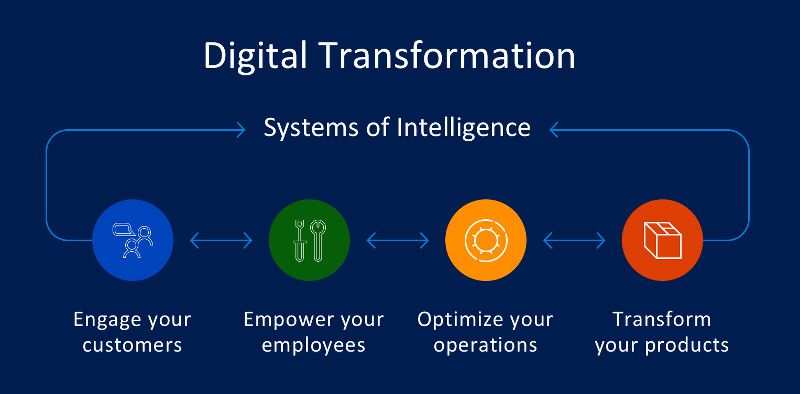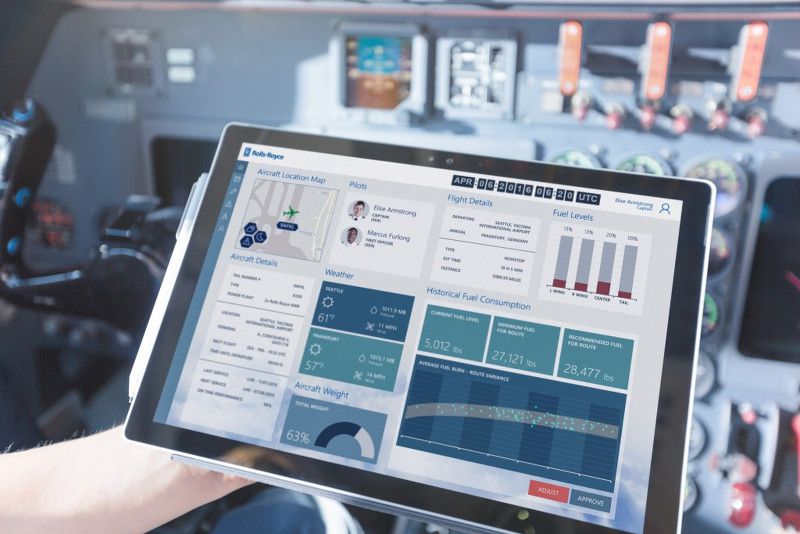Systems of Intelligence Transform Business and Protect Investments
Industry 4.0, Industrial Internet of Things (IIoT), fourth industrial revolution – just differences in terms, which show the same fact: we are at the dawn of a new era, where technology is going to drive significant business transformation. Industries will be remade; new ecosystems will be created. The good news is: Process Manufacturing & Resources industries undergo a transformation with disruptive effects, not necessarily with disruptive investments.
Overcome Limitations and Get the True Value
The challenge for industry 4.0 is – to stay with that term – the ability to have a new view on relationships and dependencies. A view that is not limited by systems, departments or enabling technologies. Industry 4.0 means a holistic understanding of processes and interconnections between sensors in the field to machines, products and company workflows up to customers, partners and suppliers during a whole product or service life cycle and beyond.
As Oliver Wyman underlined in the report “Digital Industry: The True Value of Industry 4.0”: Understanding the value of the fourth industrial revolution requires more than identifying the technological step-changes. It requires that we be able to predict the way these technological changes will transform value creation, processes and business models.
Enable Major Improvements with Systems of Intelligence
Therefore, Industry 4.0 is not about tightening up loose screws. It is a fundamental change in value chains, emerging from what we call the Systems of Intelligence.

Manufacturing and process industry has been collecting and acting upon factory floor data for decades. They have invested huge amounts of money and have excelled in building and using these systems – with enormous success: The levels of efficiency and automation, which have been realized with traditional systems and common linear processes, are impressing. But this approach has been largely exhausted. Major improvements derive now from a different setting, as said, from the Systems of Intelligence. It is based on the feedback loop of the paradigms:
- engage your customers – this is where our enterprise customers will transform the customer experience that they deliver, leveraging continuous connectivity with their smart products and their customers.
- empower your employees – this is where we provide unique capability into turning business intelligence, new insights into action and actions into business outcomes by connecting the field technicians, field workers, sales teams, service engineers as well as (I)IoT environments into the new digital process.
- optimizes your operations – this is back-end operation made digital, such as digital manufacturing, connected supply chains, etc. with global assets connected with continuous monitoring, remote capabilities, predictive capabilities, machine learning, etc.
- transform your products – this pillar goes is about moving from product business to service-centric models to operating completely on new business models.
Add Value to Existing Investments
Means, the Systems of Intelligence it is not at all about to rip and replace all existing investment. With the Microsoft platform such as Azure Trusted Cloud and our close partnership with OPC Foundation, we enable our customers to benefit from their investments and experience and to rapidly add value with the introduction of big data and advanced analytics capabilities. Today, there are more than 4,200 suppliers who have created more than 35,000 different OPC products used in more than 17 million applications.
For example, we have developed Azure platform capabilities such as the field gateway that we have announced at the Build conference in March 2016 for easily connecting and ingesting production data in a secure way. We have also built and open sourced software on Windows IoT to run OPC servers and clients. With these two capabilities our platform is Industry 4.0 Reference Architecture Model compliant.
Get Inspired by Pioneering Projects

Some of the inspiring current projects have been presented at Hannover Messe 2016 in Germany, discussed in a recent blog post. A further exciting showcase was Rolls-Royce: The industry leader in aircraft engines will integrate Microsoft capabilities into its new Service Solutions program, helping airlines get the most out of their engines by analyzing the vast amounts of data generated during each flight to come up with ways to reduce fuel usage, better plan maintenance to decrease downtime, and improve retention of the engine asset value.
In terms of environmental protection, Ecolab as the leading global provider of water, hygiene and energy technologies and services, has partnered with Microsoft to use recent and future developments in cloud computing, applying cutting-edge technology to speed up how worldwide industries tackle water scarcity. Connected to thousands of sensors in facilities worldwide, the platform collects and analyzes real-time water usage data to improve efficiency and cut water, energy, and operational costs.
An example from Oil & Gas is Schlumberger and their high-resolution reservoir simulator INTERSECT. The development of more complex fields and increased extraction challenges requires to run simulations over much larger numbers of cells in order to get the higher resolution studies needed to properly quantify the physical processes involved in hydrocarbon extraction.
INTERSECT was one of the first simulators that was designed from the ground up for large-scale parallelism and as such is an ideal tool for users running models with multi-million to billion cells. For best use of such a simulator, users must have access to large-scale HPC resources, which often disenfranchises smaller companies from the technology.
The solution: Azure compute-intensive instances providing the performance and scalability of a world-class supercomputing center, to anyone, on demand. Aside from the specialized hardware configuration, these compute instances have been fine-tuned to achieve the best possible performance when running CPU-intensive and memory-intensive workloads. This means that parallel applications like INTERSECT can scale favorably to thousands of cores, on a true HPC platform that is available on demand, and one which offers the scalability required.
Such solutions show: The Systems of Intelligence enable value chains from new ecosystems by dissolving technical limitations while at the same time protecting existing investments.




